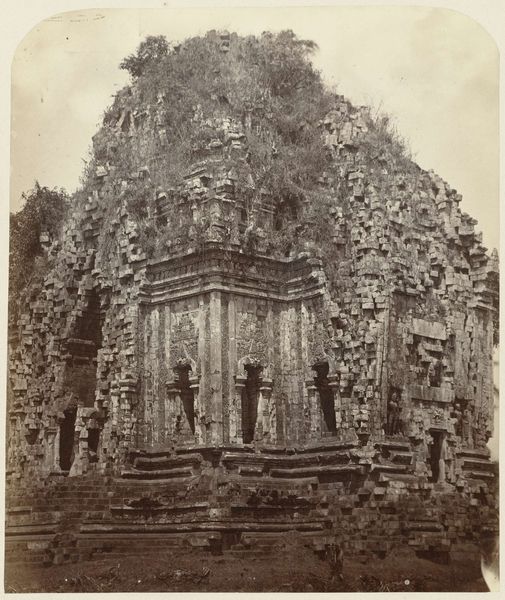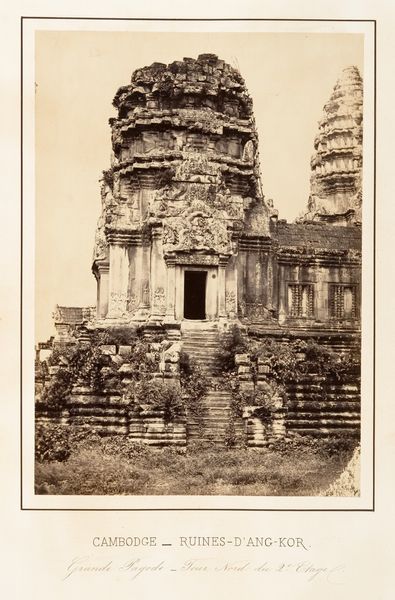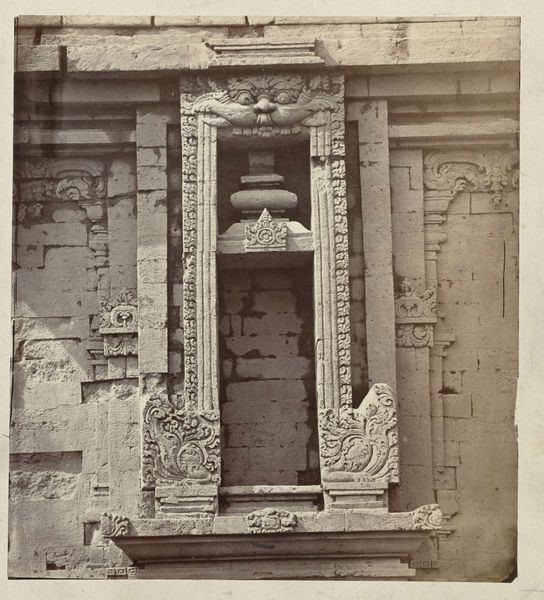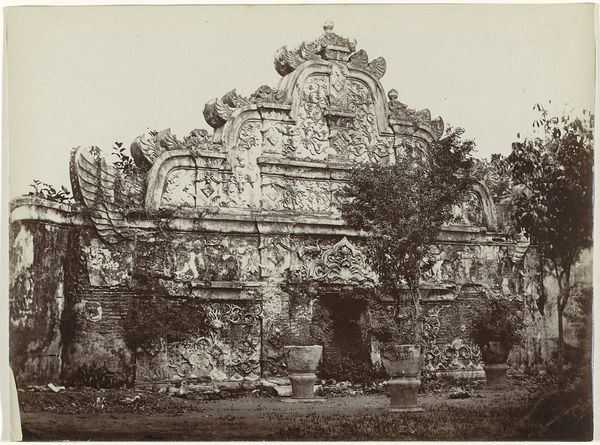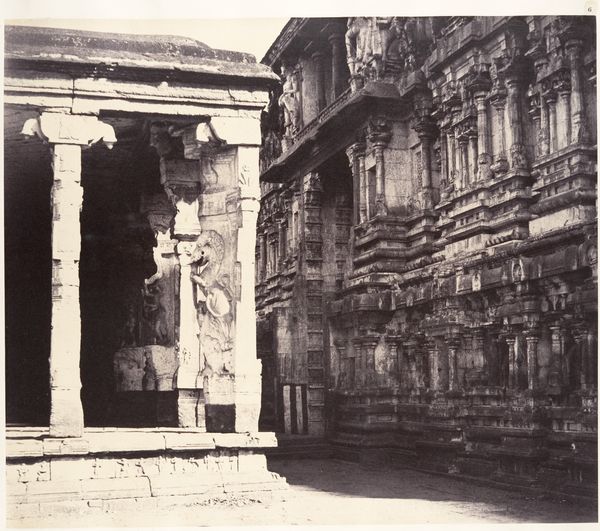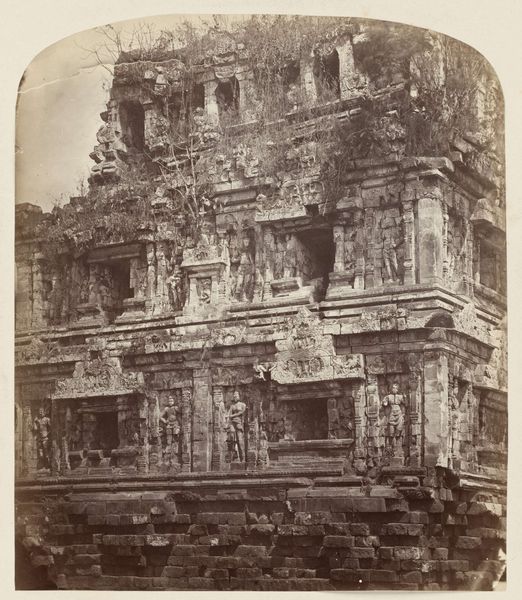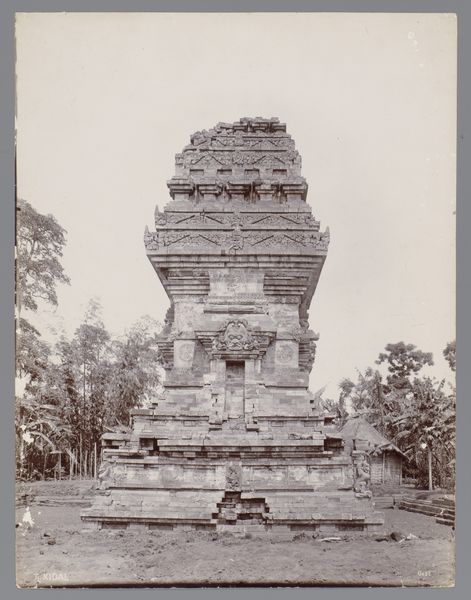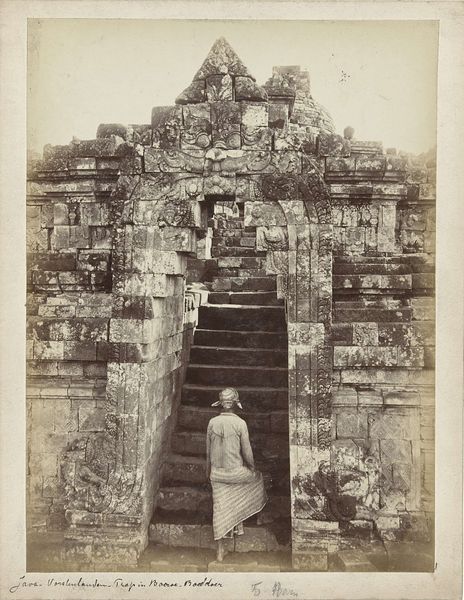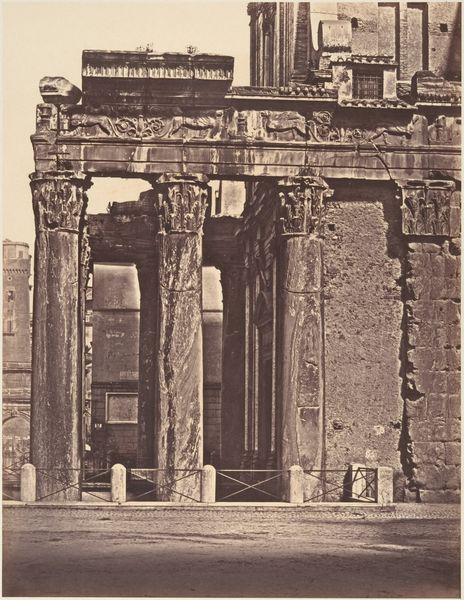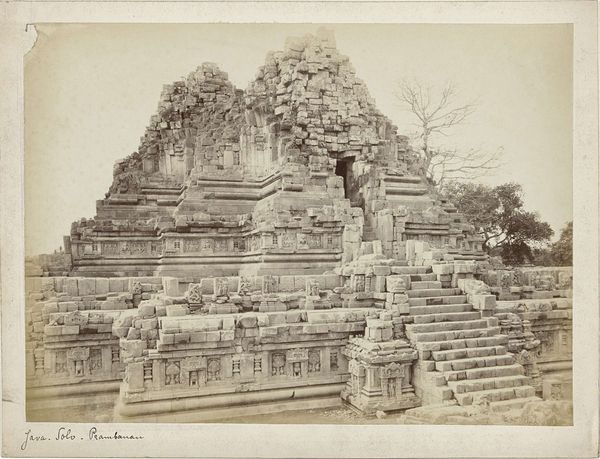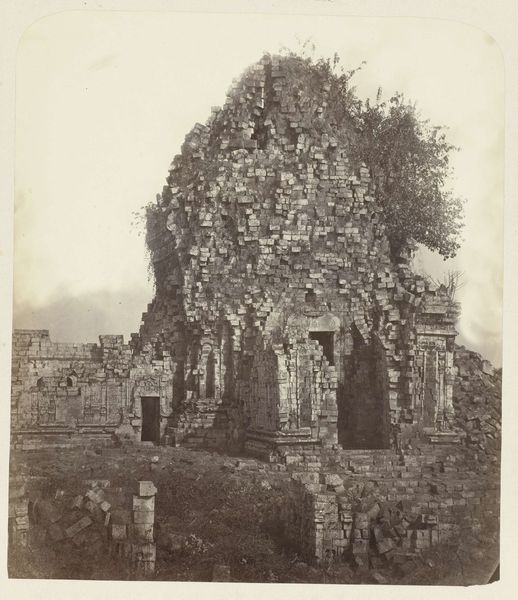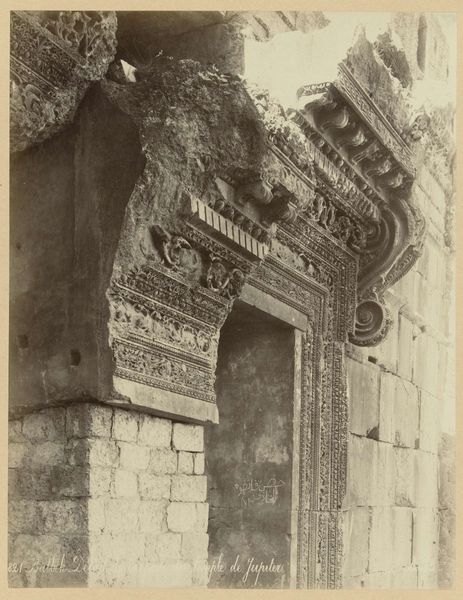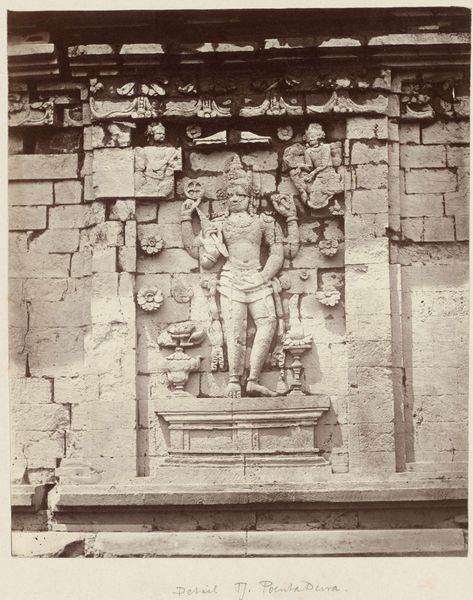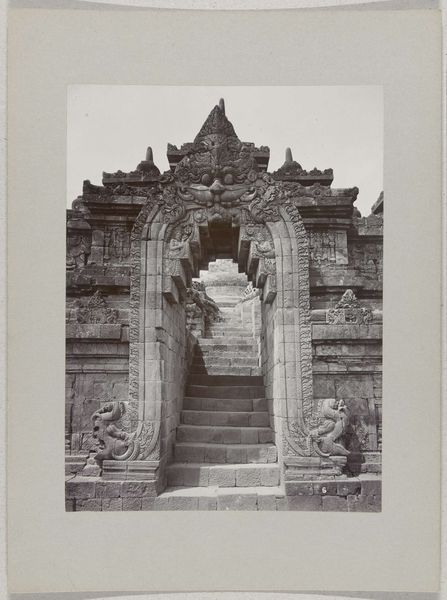
Candi Kalasan (Buddhist), one of the niches decorated with floral designs and the kala-makara motif. Kalasan, Yogyakarta district, D.I. Yogyakarta province, 8th -9th century. Possibly 1865 - 1867
0:00
0:00
photography, sculpture, architecture
#
sculpture
#
asian-art
#
photography
#
geometric
#
ancient-mediterranean
#
sculpture
#
19th century
#
decorative-art
#
architecture
#
statue
Dimensions: height 260 mm, width 210 mm
Copyright: Rijks Museum: Open Domain
Curator: Let’s turn our attention to this photographic print, attributed to Isidore Kinsbergen, documenting Candi Kalasan, a Buddhist temple in Yogyakarta. Kinsbergen likely captured this image between 1865 and 1867. It’s fascinating to see one of the temple's niches adorned with those distinctive floral designs and the kala-makara motif. Editor: Wow. My first thought? There’s a quiet beauty in this ruin. The doorway, almost swallowed by time, it reminds me of those childhood forts made of blankets – a sacred space crumbling yet undeniably present. Curator: Indeed. The kala-makara is particularly striking. These hybrid creatures, often found flanking entrances in ancient Javanese temples, served as symbolic guardians. The kala, representing time and destruction, paired with the makara, a mythical sea creature associated with creation and prosperity, creates a powerful dialectic. It’s a continuous cycle of death and rebirth. Editor: A rather poignant cycle, looking at it now, centuries later. It feels less like a monument to gods and more to resilience itself. Those floral designs, too - they seem so delicate against the weathered stone. Curator: Those floral motifs, beyond their aesthetic appeal, speak to a deep connection with the natural world. They appear alongside geometric shapes. The composition subtly echoes the temple's dedication to the divine Tara, symbolising compassion, protection and nourishment. These symbols aren’t merely decorative; they form a visual language designed to elevate the consciousness. Editor: I keep thinking about the photographer, Kinsbergen, hauling his equipment out here. There’s something incredibly intimate about seeing this space through his eyes. Almost a shared breath across time. I mean, talk about legacy, right? This temple and now this photograph. Curator: Absolutely. And in its partial collapse, the temple arguably holds even greater symbolic weight. The imagery becomes interwoven with the reality of time's passage, creating a layered meditation on impermanence, endurance and beauty. Editor: It almost invites you to create your own meaning, doesn't it? To reconstruct its original splendor and the life that pulsed within those walls…it becomes an incredibly personal act of imagining. Curator: A wonderful way to conclude. Ultimately, this image, like all great icons, acts as a threshold to our own inner landscapes, a space where individual experience meets universal symbolism. Editor: A meeting, in other words, that spans the centuries! A little bit of then and a little bit of now.
Comments
No comments
Be the first to comment and join the conversation on the ultimate creative platform.
